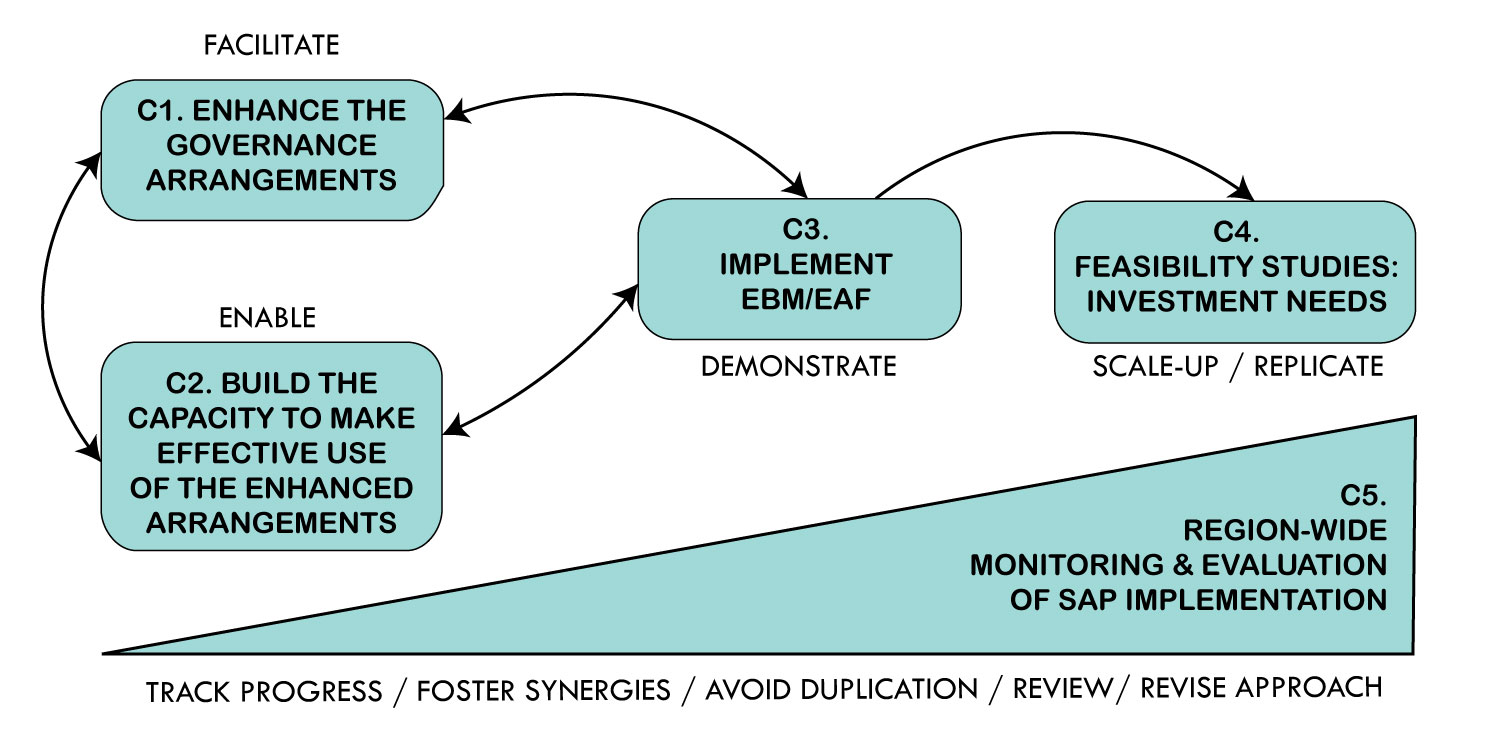The CLME+ Project consists of five complementary and inter-linked components. They reflect the Project Rationale and Strategy, and are designed to collectively deliver the Project’s objective: Facilitating Ecosystem-Based Management and Ecosystem Approach to Fisheries in the CLME+ region for the sustainable and climate resilient provision of goods and services from shared living marine resources.

Each project “component” bundles a particular kind of activities and expected “outputs” or needs. Together, the activities (and associated outputs) bundled under a single project component will typically contribute to more than one “SAP Strategy”. Consequently, any given project components’ “outcome” (i.e. result) will generally relate to multiple SAP Strategies.
The CLME+ Project’s actions for structural changes in institutional, policy and legal frameworks (Project Component 1, C1), and for increased human and institutional capacity and knowledge (C2), will be combined with a progressive implementation of measures that will lead to “stress reduction”, including innovative interventions, and initiatives geared towards the replication and the incipient up-scaling of early results (C3). In this way, as the region prepares for a major up-scaling of investments under the SAP: methods, technologies and techniques will be tested; best practices will be captured; and lessons learnt will be documented and shared.
In addition to the above, high-priority investments needed to achieve large-scale stress reduction in the medium term will be analysed under the CLME+ Project, and associated investment opportunities and options will be identified and agreed upon (C4). Results from this process will facilitate full-scale implementation of the CLME+ SAP (this is expected to result in a major up-scaling, towards the second half of the first decade of SAP implementation and beyond, of on-the-ground actions in the CLME+ region).
Synergies among projects and initiatives in the CLME+ region will be fostered through the monitoring and assessment frameworks and the knowledge management and exchange mechanisms developed and implemented under Project Component 5. This component will further provide the means to track progress towards both specific and overall objectives of the CLME+ SAP, and offer meaningful guidance for project managers and practitioners, regional governments and stakeholders, and donors alike, as it will facilitate both adaptive management and the identification of opportunities for synergies and collaboration.
The above approach is consistent with the aim of achieving enhanced human well-being (as a consequence of improved marine ecosystem status and protection) by addressing several of the most important root causes of environmental degradation in the Caribbean:
- weak governance arrangements (e.g. C1),
- lack of human and financial capacity (e.g. C1, C2, C3 & C4),
- inadequate knowledge, awareness and participation (e.g. C2, C3, C4 & C5),
- inadequate ecosystem valuation in decision-making (e.g. C2, C3, C4 & C5), etc.


